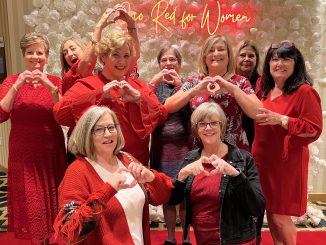
Katrina made everyone get more serious about preparing for disaster
St. Charles Parish officials agree one of the most significant changes that came from Hurricane Katrina was better assessing risk and being more prepared for disaster.
“Hurricane Keratin and the storms to follow have increased the sense of urgency we in parish government have about projects that mitigate flooding and storm damage risks — both to infrastructure and private homes,” said Parish President V.J. St. Pierre.
Included in this effort are projects and policies including: Elevations of severe repetitive loss properties, adoption of building codes and new base flood elevations, installations of pump station automatic bar screen cleaners and capacity increases, culvert improvement projects and of course the West Bank Hurricane Protection Levee initiative, according to St. Pierre.
“These projects have touched each and every district in some way,” he said. “We’ve also taken steps to become more resilient in the face of future disasters by upgrading water treatment and distribution systems, adding generators to and wind retrofitting all essential facilities and constructing a new Emergency Operations Center (EOC) and communications tower. I appreciate the residents and council who allowed us to implement these improvements.”
Tab Troxler agreed.
“Before Katrina, people didn’t understand the importance of assessing the risk in St. Charles Parish,” said Troxler, who was the parish emergency management director until 2009.This changed dramatically after Katrina where vulnerability became the focus and the need to be prepared became a major catalyst for the new EOC, he said.
The parish also was among the first parishes to call for an evacuation, he said.
“This was the first time we completely evacuated the parish and especially St. Charles Parish Hospital,” Troxler said. “One thing that changed for Louisiana was a point-to-point evacuation (providing shelter in another parish).”
Despite statewide worries over security and barring residents after the storm, Troxler also recalled local efforts to instead let people back into the parish to return to their homes and take care of their neighbors – and they did.
The motto with government officials at the time was “Let’s make it happen,” he said.
“One of the proudest moments was, when the stories were coming out of New Orleans about people walking out of Jefferson and Orleans parishes, we sent buses to those people in need of care,” Troxler said. “We went and got them and we sheltered them.”
Also, Troxler, who is now the parish’s tax assessor, also recounted an influx of people who came into the parish from hard-hit Jefferson, Orleans and St. Bernard parishes that increased its population and property values.
But the resounding lesson that came from Katrina for Troxler was how it fortified the parish’s unity.
“What I think I remember most was the teamwork … all the governmental bodies and the School Board working hand in hand,” he said. “We let the people back in as quickly as possible. Our residents did the right thing. They helped themselves and their neighbors.”
Earl Matherne, the parish coastal zone manager, also agreed.“I think the biggest difference in St. Charles Parish after Katrina is simply people’s awareness of their risk.,” Matherne said.
Before 2005, it had been generations since Hurricane Betsy had been through, and people had gotten complacent, he said. Since then people are willing to pay attention. They are willing to evacuate if they are told they need to, no one did before.
“People are willing to talk about levees and flood insurance, whereas before folks mostly listened politely and didn’t give it much thought after presentations,” he said. “Katrina changed that, and even though St. Charles Parish was spared the worst of that storm, we all have friends and family who lost everything. It’s only natural that people forget, no one really wants to consider what a storm like Katrina can do to their lives, but for now, even 10 years later, folks are still wary, and that’s not a bad thing.”




Be the first to comment